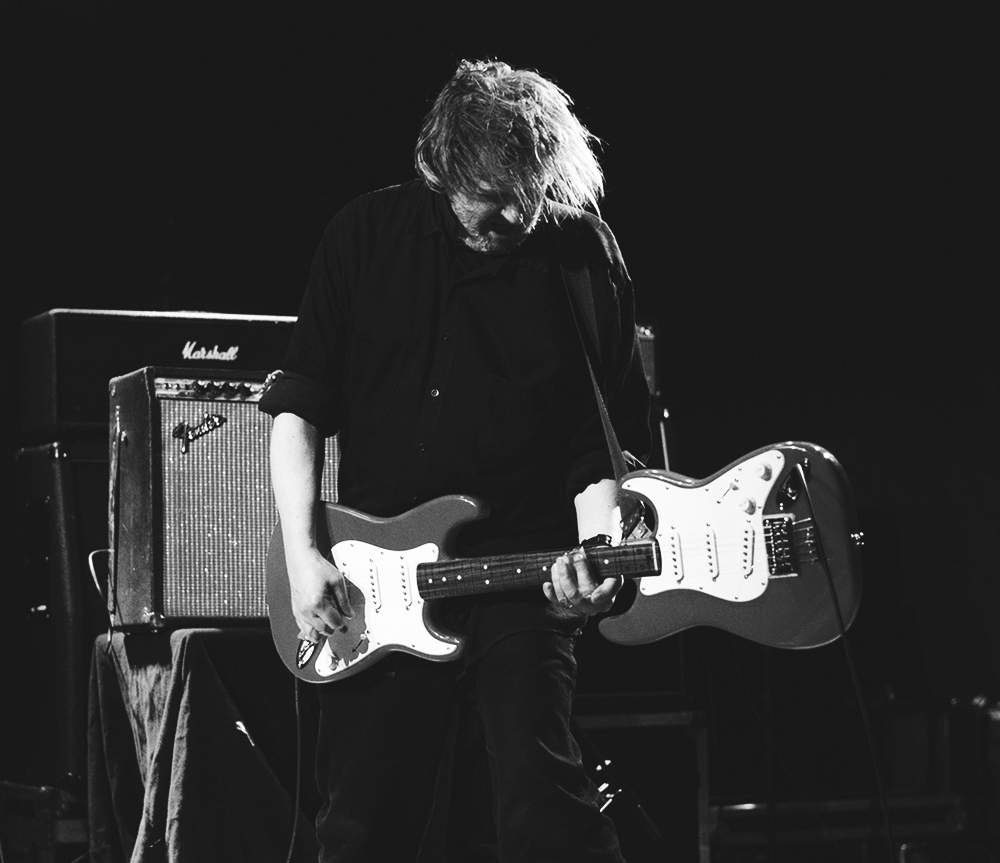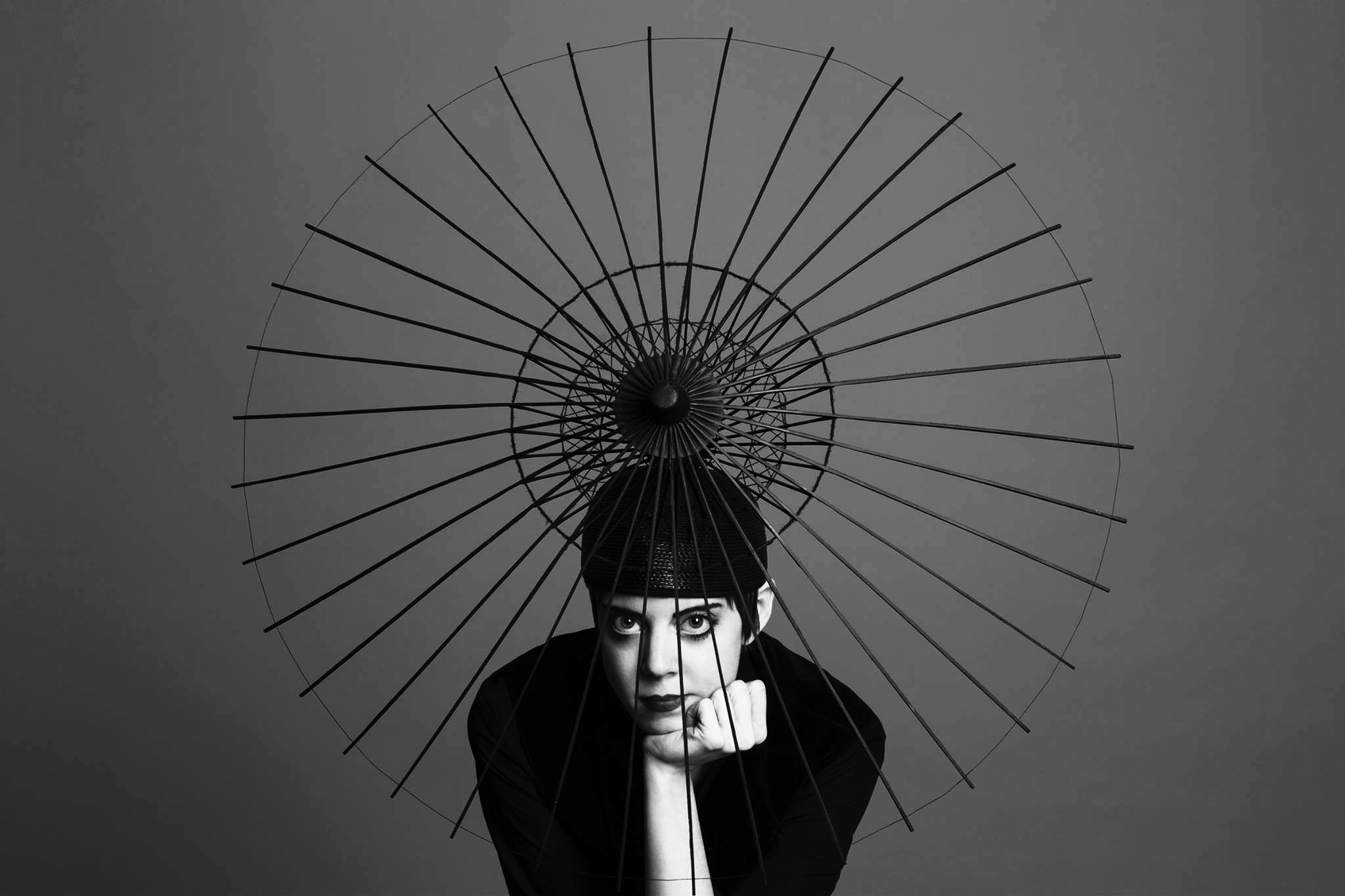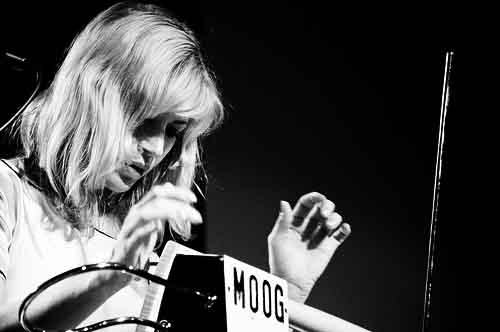Writer Kurt Gottschalk sits down with legendary experimental guitarist Glenn Branca to discuss his premiere The Light (For David), a new work written for David Bowie, premiering at Roulette on October 8, 2016.

KG: Your relationship with the electric guitar is well-known, from the twin guitars of Theoretical Girls in the late 70s to works for 100-guitar orchestras. For your appearance at Roulette, you’ve composed for four electric guitars along with bass and drums. How do you determine the shape of an ensemble for a given project?
GB: I had decided that if I was going to continue The Ascension project I would use the same instrumentation in all of them, although the tunings are different. In recent decades my symphonies for guitar ensemble are usually eight or nine guitars, bass and drums. Anything bigger is too expensive to tour. There are also the two symphonies for 100 guitars but they are always one-offs. I get the guitarists from whatever city we’re playing in. So far it’s worked out incredibly well but takes a lot of time online with the musicians since the scores are always in different tunings and in staff notation.
KG: Do you have a way of notating the particular sonic properties of the electric guitar, such as feedback and overtone, or are those decisions communicated verbally or left to the individual players?
GB: I don’t notate the sonic properties of the guitar. The pieces are written the same as I would write for any instrumentation. The sonic quality of the guitar speaks for itself, although I like to use an overdriven sound with no effects of any kind. This is the kind of sound I’ve used since the late 70s when I was doing rock bands. In the 80s, when I was working with a harmonic series tuning system, it was often a mistaken conception that I was working with overtones. The overtones are there, of course, but I was interested in the nature of sound produced by the harmonic series itself, or what is in fact the series of natural numbers.
KG: The Light (for David), which will receive its premiere at Roulette, is dedicated to David Bowie. When did you first start listening to Bowie’s music. What has it meant to you over the years?
GB: I first heard Bowie in the late 60s when Space Oddity would be played on FM stations. I thought it was great but I didn’t know who it was at the time. Later, in the early 70s when I was working in a record store, I came across Hunky Dory and was totally knocked out. I started looking for anything by him that I could find. I found The Man Who Sold the World in a bargain bin. Worst production ever. They’ve fixed the mix and the master at this point, after [Kurt] Cobain covered the title song.
Then Ziggy, of course, and I was hooked. There were a few avant-garde bands that had some pop success, but nothing like Bowie. He was our hero. Intelligent, talented and with the desire to create a really new, different rock. It was important at that time for us (the avant-gardists) to have someone who spoke our language actually be heard on the radio. And of course he was beautiful and clever and compelling.
KG: Did you ever have a chance to meet or work with him?
GB: Yes, Tony Oursler was doing an installation for a German world’s fair in, I think, 2001. I was invited to write the music and Tony wrote the text which Bowie read and was played back on multiple channels. Tony had worked with Bowie a lot, doing video for him I believe. During the work on this gig, I got to hang out with David twice. One surprise was that we were both book collectors. He was really excited about a book he had just bought for $50,000. This was literally a few days after his company had gone public and he had made $50 million in one day. It was hard for him to think about anything else. He was over the moon. Just proved to me that rock stars don’t make anywhere near as much money as people thought. Of course, they don’t make anything now unless they’re tits-out superstars.
I had a very strange “relationship” with David over the years that started in the early 80s when his office called my record label, Neutral, for the purpose of getting a copy of every record in the catalog. For almost 20 years I would get a call about every couple years from someone who was trying to get us together for some purpose: collaborate, play on the same bill, always something. One time I heard he had played the entirety of my Symphony No. 6 for the audience before he come out to do a show in Europe. Another time I heard from one of the engineers on the Tin Machine sessions that he had brought in about six or seven of my records and told the engineer “Make it sound like this.” Stuff like that was always happening.
He died too soon, he was only a year older than me. I was shocked, just like everybody else. And with the release of his brilliant Black Star, I couldn’t stop listening to it. I hadn’t realized how much he had meant to me throughout most of my life and that album broke my heart.
I still can’t believe he’s just gone. It affected me even more than Lennon. I think that somehow knowing that he was here, in my case literally right down the street, was like having a muse. I don’t know what else to say. It hurts.
KG: Bowie worked with a remarkable succession of guitarists, from Mick Ronson and Carlos Alomar to Earl Slick, Adrian Belew and Reeves Gabrels not to mention recordings with Robert Fripp and David Torn. Is there something about Bowie’s use of guitar that speaks to you in particular?
GB: That’s a tough one to answer since most of that playing was part of a very distant past. I loved Mick Ronson at the time. There were few players getting that kind of sound. I was never into metal and found guys like Glen Buxton, Joe Perry and Johnny Thunders to be more what I wanted to hear. Ronson was one of the first, along with Mark Bolan. I think every single one of the guys you mentioned did a great job with Bowie’s music. And Reeves Gabrels could do anything. I think that’s why Bowie got him. His work on Outside was amazing. And of course there was Fripp, never a favorite, but what he did on Heroes was moving. It made the song.
These were guys that I loved to listen to, among many others. But as a composer my approach had almost nothing to do with any of them or anyone else for that matter. I wanted to do serious experimental rock and that sound, that approach, wasn’t gonna work. I liked to fool around with it very early on but the music was the priority. When Theoretical Girls and the Static started pushing the parameters, the audience just got bigger and bigger. After a very short time it became clear that this was going to be my work.
It’s never really been about the guitars. They just happened to be what was convenient. And as things have turned out they still are, although there’s far more I’d like to do. I’d really like to create an entire orchestra with mostly instruments that I create myself. But such things are far beyond my means.
KG: What’s coming up next for you?
GB: Death? I wouldn’t mind having Symphony No. 16, my second 100 guitar piece, heard in NYC, and maybe even properly recorded.



